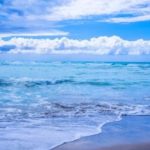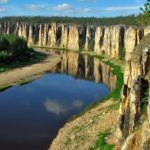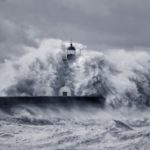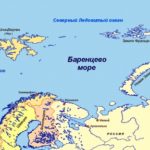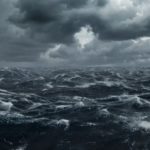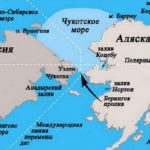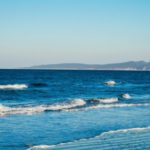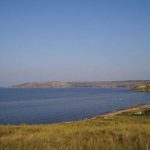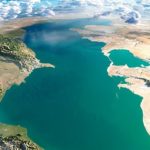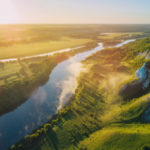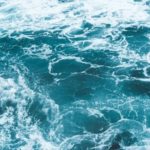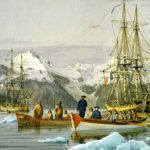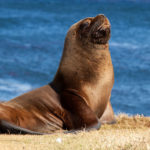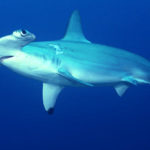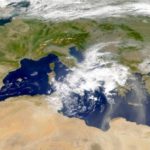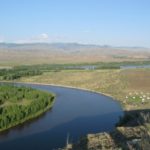Laptev sea
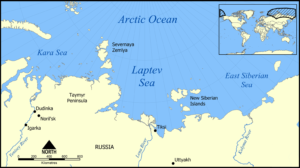 The Laptev Sea is one of the marginal seas of the Arctic Ocean located between the Taimyr Peninsula and the Novosibirsk Islands. The area is 672,000 square kilometers, the average depth is 540 meters, in some places more than 3 thousand meters are navigable for all sea ships.
The Laptev Sea is one of the marginal seas of the Arctic Ocean located between the Taimyr Peninsula and the Novosibirsk Islands. The area is 672,000 square kilometers, the average depth is 540 meters, in some places more than 3 thousand meters are navigable for all sea ships.
The largest river of Siberia, the Lena, flows into the Laptev Sea, through which forest and other riches of Siberia are exported. The length of the coast is 1300 km. many bays, bays, peninsulas and islands.
If you move along the Northern Sea Route to the east, then overcoming the Barents Sea, and after the Kara Sea, then clear water will open to your eyes beyond the islands of Severnaya Zemlya. After the Kara Sea, cluttered with hummocks, this seems incredible, but nevertheless it is so, before you the Laptev Sea.
Scientists attribute such warming over the past two decades to global warming and the geographic location of the Laptev Sea, fenced off from the west by the Taimyr Peninsula, and from the east by the Novosibirsk Islands. In addition, a large influx of the flowing rivers Khatanga, Anabar, Olenek, Lena and Yana, also contribute to the formation of relatively warm coastal waters in the Laptev Sea.
In cold years, this sea is also covered with a solid ice shell, and frosts are up to -35 degrees, there have been times when the temperature has set to -50. It is not for nothing that the discoverers of this sea, by whose names it is named, are cousins Dmitry Yakovlevich and Khariton Prokopyevich Laptev got here along the Lena from Yakutsk.
In those days when the first explorers of the Russian North came here, this sea was called the Siberian or Outskirts. The beginning of the Great Northern Expedition, the most ambitious of all known, was laid by Peter I at the beginning of the 18th century. This expedition was led by Commander Vitus Bering, one of the best Petrovsky sailors. The objective of this expedition was to study the Russian coast from the Ugra to Kamchatka. The expedition worked several units, with a total number of more than 600 people. Two detachments commanded by lieutenants Pronchishchev and Lasinius, leaving Yakutsk on the Lena to the sea, were to explore the coast from the mouth of the Lena to the Yenisei, to Kolyma and further to Kamchatka.
However, none of the detachments the task assigned to them could not be completed. Lieutenant Pyotr Lasinius with a team of fifty people on the two-masted deck boat “Irkutsk” left Yakutsk, reached the mouth of the Lena, went to sea and on August 20, 1735 headed east. A few days later, due to fogs and ice, he stopped at the mouth of the Kharaulakh river. There the Irkutsk bot remained frozen in the ice. The fate of the Irkutsk team is perhaps the most tragic of all the expeditions. During the winter, scurvy began and 42 people, including Lasinius himself, died. Only 9 team members survived after a terrible winter. To save them, Commander Bering sent a special group, led by the navigator Shcherbinin, who delivered the survivors to Yakutsk.
After such failure of the detachment of Lieutenant Lasinius, Commander Bering appointed Lieutenant Dmitry Laptev, his best assistant, as commander of Irkutsk.
Dmitry Laptev and his cousin Khariton Laptev began naval service in 1718 to the midshipmen under Peter. By the beginning of the Great Northern Expedition, Dmitry was already an experienced sailor, so he got on the expedition. After Bering’s order, preparing for the campaign, he recruited the best sailors into the team and with this brave team, in small boats, along the Lena reached the mouth of the Kharaulakh River, where the abandoned Irkutsk was located. Having restored the bot, Laptev brought him to the delta of the river. Lena. There, the bot was loaded with everything necessary, and on August 22, 1736 he went to sea and headed east. But time was lost and after four days the Irkutsk ran into a wall of ice. Laptev, so as not to destroy the team, was forced to return to Lena and stand for the winter in the Bulun area.
The hardest wintering nearly ruined this expedition too, but Dmitry Laptev, taking into account the sad experience of Lasinius, did everything to save the crew of Irkutsk. There was scurvy again, and in order to protect his sailors from scurvy, Laptev forced everyone to drink a decoction of cedar cones, they ate frozen raw fish and were constantly at work. This time, even scurvy did not destroy the brave sailors.

